A century from now, the ultimate adventurer may look something like this: A super-suited, jetpacked explorer flying at breakneck speeds through the farthest reaches of the universe, discovering natural resources that can help us all live more fulfilling lives. Maybe. Or it could be an uber athlete going primitive, paddling into a 100-foot wave for the ultimate ride, or hiking from the ocean up to the peak of K2 before skiing the full mountain and hopping in a kayak to navigate Class IV rapids on the way back to the sea.
We don’t really know. What we do know is that the current generation of adventurers isn’t holding back in imagining the next set of limits explorers will shatter.
Kayaking Victoria Falls
According to expedition kayaker Ben Stookesbury, who has notched more than 70 first descents in addition to founding .
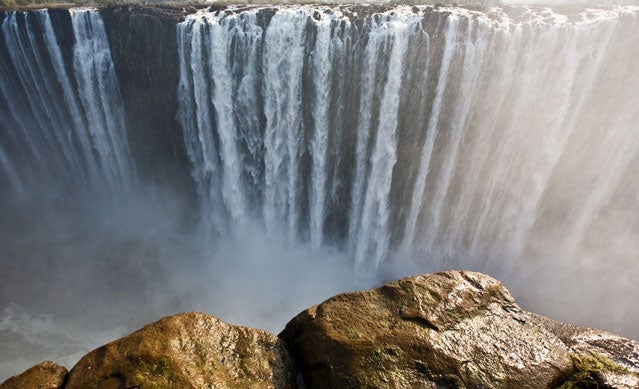
is probably the best-known and most spectacular on the planet. At over a mile wide, it's commonly insinuated that a descent of the falls by kayak would be tantamount to suicide. But during a 2011 shoot with a Brazilian television show, kayaker and I saw a runable line over the far right side of the falls called the Devils Cataract. With a total drop of around 262 feet, not only would it establish a new world record for height, it would also be the first time a kayaker would eclipse 80 miles per hour in a kayak (this would happen during the final two-tenths-of-a-second of free fall).
From there, I could envision kayakers concentrating on speed as the next bench mark for a record setting descent. Achieving 100 miles per hour in a kayak seems like a good goal. In theory, to achieve that speed in a river, we would need to find a runnable falls that was at least 336 feet tall. Of course to reach such a speed from that height, the wind resistance would need to be negligible. Fortunately, the downdrafts produced by falls would help reduce resistance. The center of Victoria Falls is roughly 335 feet tall, which would satisfy the height requirement, but the rocks at its base are a death trap. However, options for a 336-foot freefall might be found in British Columbia, Venezuela, or Norway.
Skiing the Himalayas
According to Chris Davenport, big-mountain skier who climbed and skied all 54 of Colorado’s 14,000-foot peaks in a single year.
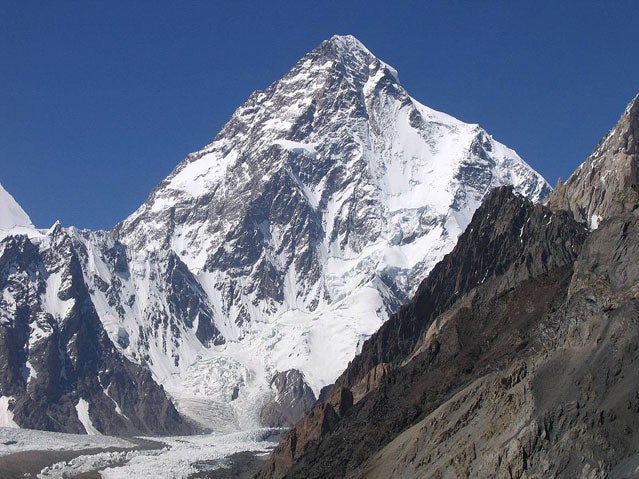
Probably the most difficult thing left to do on skis is to go down all 8,000-meter peaks in Himalayas. Only 14 people have climbed them all. Nobody has skied K2, but I see that happening within the next few years. People have died trying, but nobody has skied all of them. Frederik Ericcson, a Swedish skier, . didn't get it from the summit but he was able to ski a lot of the mountain. There are younger generations, guys without families who are willing to take risks that those of us with families won't anymore.
I think that to accomplish it, it will have to be done by a local guy. Somebody who knows the snow and trailheads. Or by somebody with partners on the ground who can tell them where to go. Another Swede, , may be the guy to pull it off. Better technology will help, but the thing with technology is no matter how advanced it is, you can never overcome Mother Nature. Nobody can predict the snowpack.
Airbags are a big thing now. What about an airbag that just doesn't keep you above the snow but actually lifts you right out of everything. They already have jet packs. You just have a personal jet pack that gets you in and out of dangerous situations. But if there were something to teleport you right out of things it would probably change the meaning of the accomplishment.
Traveling to Jupiter
According to Kevin Hand, deputy chief scientist for solar system exploration at NASA's Jet Propulsion Laboratory.

Imagine looking out your window and seeing the swirling colorful clouds of Jupiter. That could be the vista for one of the grandest adventures of the next 100 years. Over the course of the next 75 years, humans will likely land on Mars and perhaps even scale , the largest volcano in the solar system, but it will be Jupiter and the oceans within its moons that drive humans to explore out beyond the asteroid belt.
The goal will be simple but profound: retrieve a sample of alien life from beneath the icy shell that covers Europa's global liquid water ocean. Robotic emissaries will have completed much of the reconnaissance, but for the final step—getting a sample of living life—humans may need to be in the loop.
Humans will go into orbit around Jupiter just beyond Callisto, the fourth of Jupiter's large moons, and launch a submersible coupled to a melt probe that will land on Europa, a moon slightly smaller than Earth's moon. It will melt through the ice, and then astronauts will take control of its movement and direct it to swim through the ocean to collect data and samples.
The samples will then have to be brought back to the surface and launched to the base camp spacecraft, where the astronauts will be eagerly awaiting a revolutionary moment in science. They'll examine any retrieved samples for signs of life.
It's anybody's guess as to what we'll find. Europan microbes? Europan jellyfish? Whatever it is, it would be a sample from a second origin of life and such a discovery would mean that we live in a biological universe—one in which life arises wherever the conditions are right.
Surfing a 100-Foot Wave
According to surfer Garrett McNamara, who has ridden some of the biggest waves in the world.
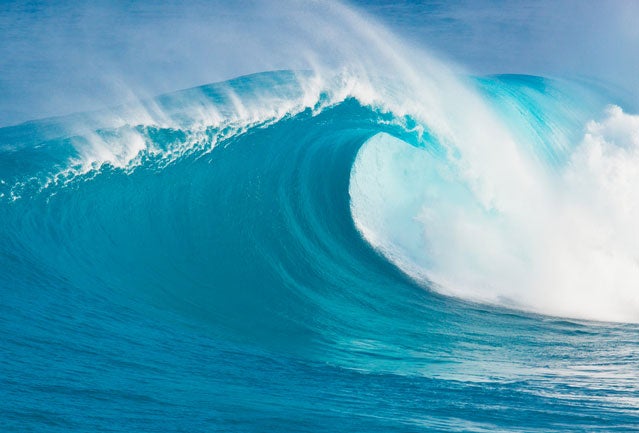
There is no question that the next biggest thing to happen in surfing will be someone riding the elusive 100-foot wave. Probably sooner than later. Maybe in Cortez; during November or December. There are also a lot of spots in Europe, Alaska, or Patagonia where it could happen. But you need the perfect conditions. To create a big enough wave, you need a monster storm to hit a location where the ocean floor has a deep channel running about 1,000 to 7,000 feet of depth to the reef that the wave will break on.
If you would do it if there was nobody around, nobody on the beach, no cameras, then you're doing it for the right reason, for fun. When your ego becomes part of it, you'll go where you wouldn't normally go. It's dangerous anyway. You can drown from being under to long, the power of the wave is so immense. It could break you—your back, your neck. It could paralyze or kill you. It's so powerful that it could rip your survival suit right off, leaving you with nothing but your cojones. The main thing about riding a wave this big is survival.
I'm not chasing a wave that big, but I always welcome emails from people who say they have a huge spot in their backyard. Someone will be in the right spot at the right time. The rest of us will just have to wait and see. If you got a great wave and want to see somebody ride it email me and send a pic gmachawaii@gmail.com.
Documenting Every �����ԹϺ���
According to David Holbrooke, filmmaker and festival director of Mountainfilm in Telluride.

In the future, people may be bored with something that was filmed in the past because they can see these incredible things now, in realtime. has taken cameras and placed them at icebergs around the world to watch their time-lapse disintegration. You could place permanent cameras on Everest. So it makes sense that we could have live video signals from the top of Everest. These would become live movies. People would protest, but you could sit at your desk and watch sunrise from Everest. Who wouldn't want to see that?
From a documentary perspective, space is still fascinating. I don't know what the trip will be—it could be a trip to Mars—but I believe it will be in space. But just because you make a movie doesn't mean it's a great film. In the future technology will be a big part of it. But somebody with an iPhone who knows how to tell a story will be better off than somebody with four helicopters. is great example. It's all of two minutes and just two girls in a canoe but it's beautiful.
I do think we're in an age of story telling. And that's going to become more so the case. I think technology already has become ubiquitous enough that people no longer need the gatekeepers; the editors and producers who used to control access to the audience. The means of production already exist and people—especially young people—are figuring out how to get the word out about the issues they care about. From Tahrir Square in Egypt to , there are young people around the world who feel very empowered to not only tell a story, but achieve something that is even harder: find an audience. We already can shoot and edit on our phones but at some point before too long, we will be able to stream live from them. Those news crew vans with the huge satellite dishes will be a thing of the past as people with a great cell signals replaces them. The technology is going to get more intuitive and higher quality but the real question is what will people do with that? High-def videos of cute animals have their place, but only to an extent. People will have to do be able to do something that technology can't really help with, and that's telling good, smart, relevant stories.
Flying Up in a Wingsuit
According to Steph Davis, climber, BASE jumper, and wingsuit flyer, and Mario Richard, BASE jumper and wingsuit flyer.

�ٲ�������:��Right now the trend with wingsuit flying is “firstest and mostest”—things like the “longest, farthest, fastest, highest wingsuit flight,” and this is not the essence of flight, in terms of what birds are doing. Essentially we are all flying gliders, because the suits only go down, and I think the thirst for “firstest and mostest” is a diversion down a road to nowhere. I think the real visionary change is going to happen with wingsuit ridge soaring. Birds are able to catch air currents along ridgelines and use those air currents, or thermals, to get lift, which means they maintain and actually gain altitude. That's the key difference. They can gain altitude, something gliders and wingsuits cannot do, and use it for forward glide.
�龱������:��The wingsuit designs will have to change. With today's wingsuits, you fall too fast. If the speed you're falling in the wingsuit could be reduced to less than the speed of the upward blowing wind, then you might actually rise while flying forward. Hang gliders do it all the time, but it has never been applied to wingsuit flight—at least not yet. In the paragliding world, wings are getting smaller and smaller to handle stronger and stronger winds. Wingsuit designs would have to be adapted to this new way of soaring and, possibly, we could just walk up to a crazy windy cliff, put on our suit, and just hop on the wind current, soaring for as long as the wind's strength doesn't diminish.
On-Sight Soloing New Routes
According to Alex Honnold, big wall free-climber who scaled the Nose of El Capitan in less than six hours.
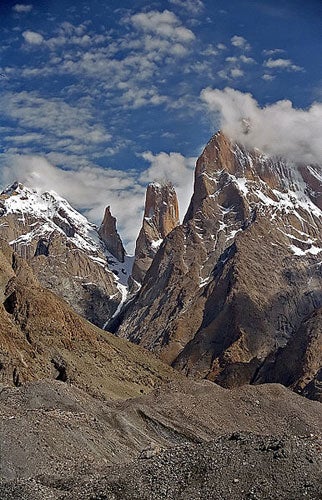
It's hard to even imagine what kind of changes 100 years could bring. So much has changed in just the last 25. I asked my climbing partner, , about this last night as we were riding an overnight bus—with Wi-Fi!—after climbing the big granite walls of Cochamo, in Southern Chile.
We couldn't really agree on anything definite, but I sort of think it might be something totally out of left field, or some kind of unforeseen technological leap that blends BASE, speedflying, and climbing in a way that allows you to climb anything unroped and safely fly away in case of trouble. Right now you can only BASE jump off an overhanging route, and there just aren't that many long overhanging routes in the world. My thought is that maybe in the future, with better wings and gear, you could climb any kind of terrain and manage to fly away. Like in the Star Trek movie when Kirk solos the Nose of El Capitan and Spock hangs out behind him in hoverboots.
However, I'd also like to think that the greatest future achievements will be on-sight soloing huge walls in remote places. For example, scaling the , a gigantic 5.13 on the Nameless Tower in Pakistan. Some might be in places we never though of before, especially with global warming. All those mountain areas will start to dry out a bit and allow for more free climbing. I know that the glaciers at the bottom of the spires in Patagonia are supposed to be something like 500 feet deep, so that adds quite a bit of wall. I assume the same would be true for all the spires in the Karakorum, Mongolia, and in Greenland. Basically any big granite wall covered by a glacier, which is the description of most of the remote granite walls in the world, would offer a significantly longer route.
Exploring for Natural Resources
According to David de Rothschild, captain of the Plastiki and an adventurer known for raising environmental awareness through exploration.
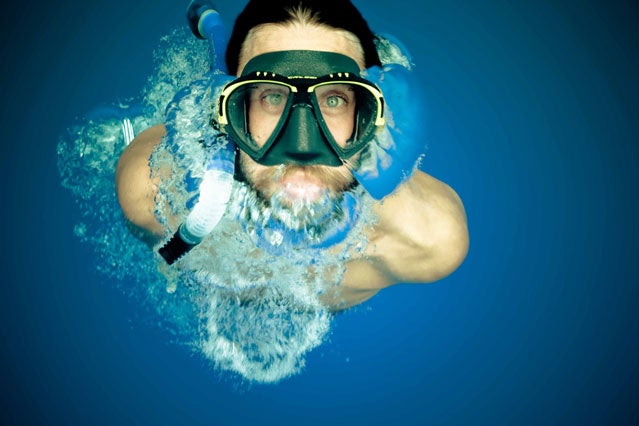
Exploration used to be about conquering for land, now it's about conquering for ego. You climb Everest as an adventure tourist. Then you need to up the ante, so you climb it without oxygen. But there's no greater good to that. I think we're coming out of that era of exploration. �����ԹϺ��� and exploration will change according the changing needs of our planet. You used to go across the Arctic on ice, but there won't be ice anymore. In the future, the missions will be more critical: finding ice on another planet so that we have the natural resources that we no longer have on this planet. We'll go on space missions that involve operating huge, crazy submersibles to explore under the ice on Europa. We'll have aquanauts exploring the deepest parts of the ocean. New online technologies will give us an ability to collect data and learn where we come from as a species, and how we can survive as one in the future. We'll see adventures that won't preserve the few—and when I say that, I mean the companies that get major exposure because their brand is plastered all over an expedition—it will preserve the masses. It will be about how we fly spaceship earth in the future, and refuel and recoup this planet.
Diving Into the World’s Deepest Cave
According to Kenny Broad, world-renowned underwater explorer.
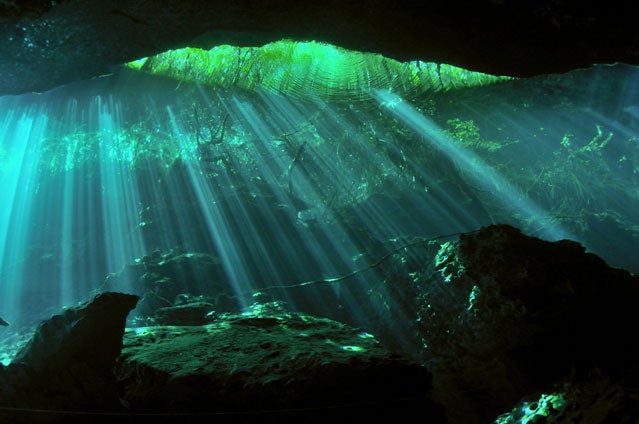
We could make an argument that the frontier for physical exploration is underwater caves. In fact, the deepest point accessible to humans likely sits in a water-filled sump at the bottom of a deep cave, accessible only by diving. Underwater caves need to be explored by people because only people can navigate them properly. These caves are 300 feet below the surface and go back miles and miles. Robots get stuck and lost and can't collect samples because they don't have the dexterity.
The race to this place is far from over. As teams are pushing further underground, they are faced with the most challenging diving conditions on the planet. Some of these underwater caves can be found inland in Mexico, while others, like those in the Bahamas, are located in parts of the ocean bottom that were once dry during past ice ages.
As dive gear, including mixed-gas rebreathers, underwater scooters, heated drysuits, and decompression computers become more reliable, divers are matching the technology with bolder missions to this inner space. Traveling over 100 meters deep in complete darkness with a thin nylon guideline as the only link to the world that we have evolved to live in, the mental and physical challenges are unmatched.
The booty that we're after are never-before seen life forms called extremophiles, which can tell us loads about the evolution of microbes that dominated the earth billions of years ago. We may find rare fossils from previous ice ages when the caves were dry, or geologic samples providing insight into the earth's climatic past—which may tell us what's coming down the pipes as we pump greenhouse gasses into the atmosphere at unprecedented speed.
Telling the Next Great �����ԹϺ��� Story
According to Chris Keyes, the vice president and editor of �����ԹϺ���.
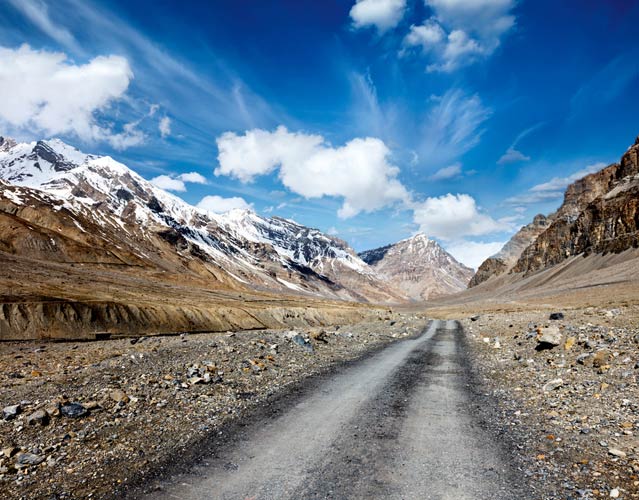
The greatest adventure story of the next century will almost certainly involve a helmet-cam or multiple body-cams or omnipresent live-streaming cameras you can't even see. You will be alerted by push notification when something important is happening, then watch as a 3D map is updated in real time with video and each athlete's twitter feed. While reclining in your La-Z-Boy, you'll track heart rates, power outputs, and hear the quickening breath of some yet-to-be-born super alpinist as she climbs the Seven Summits in Seven Days (FYI, I've trademarked that). In short, the big adventure of the next century will involve—surprise!—quite a bit of wiz-bang technology.
But here's my bold prediction: no matter how audacious the athletic objective, it will only resonate on a large scale if it involves two decidedly old-school factors. First, someone has to die. If that sounds cynical it's because it is. But it's also true. It's my job to know the adventure-story canon forward and backward, and aside from Shackleton's Endurance epic, I can't think of another impactful adventure story that didn't involve some unfortunate soul taking his last breath. From to to to to , it's the tragedy that makes an ambitious undertaking—or foolhardy mission, depending on your point of view—so compelling. Success is so forgettable.
Second, the odds of some future expedition having a wide cultural impact will be greatly increased if a talented writer is embedded. Any expedition can produce content by the terabyte, but only a gifted storyteller can sift through all the material, capture the most salient points, and discard the rest to make the whole thing come to life—whether it's on paper or an image projected in front of your eyes as you lie in bed. Longform
narrative storytelling isn't going away, but there will always be a shortage of people who can do it well. That shortage is even more dire in the adventure realm, where first-person accounts require a dual-threat—someone who can climb the peak and mold a great narrative. It was Jon Krakauer being able to climb Everest and write about it so pointedly that made Into Thin Air what it was. Few people like that exist, especially in an era when the greatest athletes start specializing at age 10 or younger, leaving little time for pursuing a passion for literary craft. But if the aforementioned super-alpinist also happens to have a reporter's instinct and a way with words—and a climbing partner willing to die from exposure at 27,000 feet in exchange for literary immortality—my money is on her.


